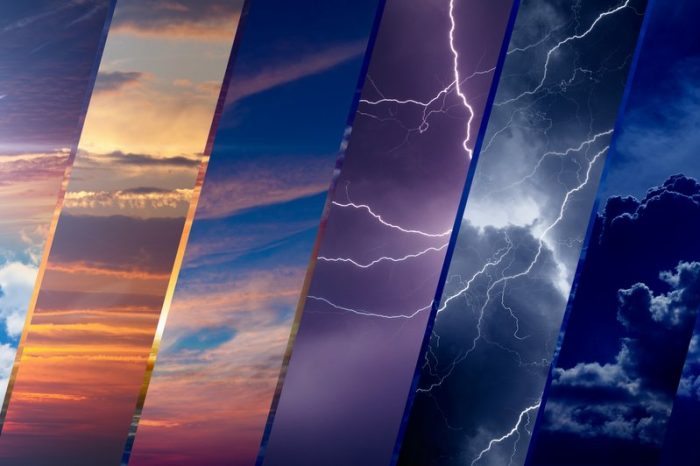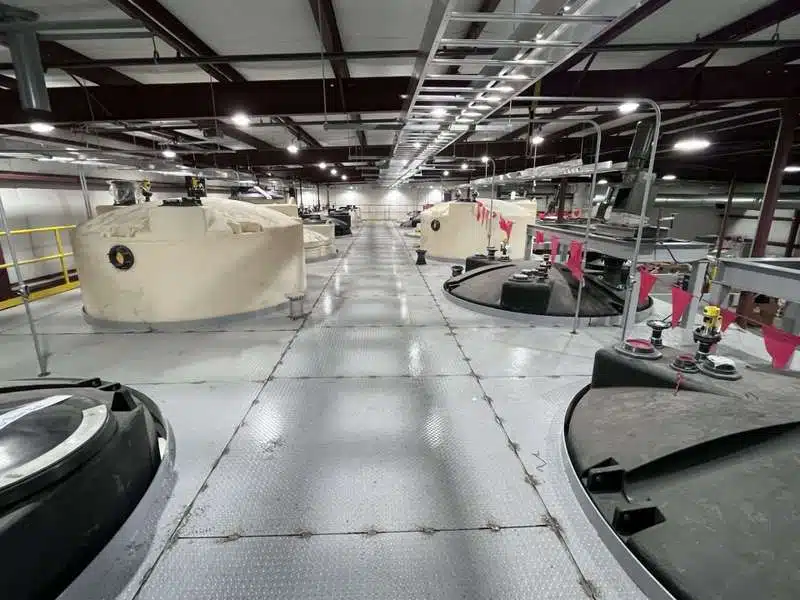Action plan: How to reduce extreme weather risks for solar and energy storage assets

By Alon Mashkovich | As climate change continues to accelerate, it is causing the rate and intensity of extreme weather events to increase. Heatwaves, heavy rainfall, larger hail, heavy winds, wildfires and winter storms are all on the rise, causing havoc to the insurance industry, energy demands, and our infrastructure. And while transitioning to clean energy can help mitigate some of the worst impacts of climate change, we still need to know how to best manage the risks.
Extreme weather impacts all energy
Before diving into the top extreme weather threats to solar assets, it is important to clarify that extreme weather impacts all forms of energy production. For instance, the deep freeze in Texas in 2021 was largely caused due to a failure of the LNG infrastructure. Some of the top threats to solar asset generation and long-term uptime are winter storms, hail, heatwaves, and dust storms.
- While winter storms have an immediate impact on generation during the storm itself, the longer-term threat is due to water intrusion and insulation failure, especially at the inverter level.
- There have been innovative solutions to prevent solar PV modules from suffering a total loss from hail damage, such as thicker tempered glass and stow modes for trackers, but microcracks that are undetectable to the human eye can still cause decreased production.
- Lower energy output is also a well-known result of heatwaves, but larger dangers include increased risk of fire and tripped breakers.
- Lastly, dust storms, that are increasing due to drought and forest fires, require more frequent and immediate post-event cleanings.
Mitigating extreme weather risks with forecasts and response plans
As solar energy management and optimization solutions advance to include automations, smart workflows, and AI, there are more opportunities to both mitigate these risks and minimize impacts.
Response: One of the simplest ways to improve responses to extreme weather is through custom checklists and inspection forms that are automatically generated based on real-time weather feeds and forecasts, monitoring data, and asset type. This allows for teams to receive clear, specific, and actionable tasks (i.e., inspect inverter X on string Y or to complete a thermal inspection) triggered immediately after a weather event. These checklists can be prioritized by site, asset criticality or event severity, or SLA tier in order to enable faster response times for high-priority clients.
Forecasting: However, before a weather event happens is the best time to respond. That’s how forecasting and AI tools in advanced O&M and asset management solutions are helping to further improve fleet uptime. AI can analyze historical weather data along with the relevant response to better predict likely system impact, helping to route forms and checklists to the right teams.
For instance, before major events (i.e., hail or extreme rain), teams can pre-schedule high-voltage technicians to ensure they’re available once the event passes and during specific weather events, trackers can be placed in stow mode. While mobile-ready forms can track technician responses in real-time, so operation managers have instant visibility into recovery progress.
Forecasting + automated checklists = asset uptime
There are a few interesting examples of how forecasting and checklists can work together to improve operational efficiency and asset uptime.
- In the event of a hailstorm, a checklist is created that includes a thermal scan, which documents damage for insurance submission within 48 hours.
- In the event of a heatwave, a high-sensitivity alert for temperatures can be implemented to proactively ensure ventilation and prevent overheating.
- In addition, before a heatwave or a cold snap, batteries can be pre-charged to provide backup in the event the grid fails.
- One last example is a post-storm checklist rollout that is automatically prioritized by SLA so that the critical sites are up and running within only a few hours.
While extreme weather events can put clean energy assets at risk, adding smarter asset management and O&M tools to business operations can help decrease associated costs – both to system uptime and business productivity. And as extreme weather events get more frequent, it will be increasingly important to holistically embed sophisticated AI and forecasting solutions into business processes.
Alon Mashkovich, CEO & Co-founder of enSights, is an entrepreneur with more than 10 years of experience in strategic business development, operations management, energy efficiency, and renewable energy. Previously as business & energy efficiency consultant, Alon saw the challenges that his clients faced with energy management and optimization, which led him to create enSights with his co-founders. Alon is passionate about helping enterprises in their digital and clean energy transformation.




